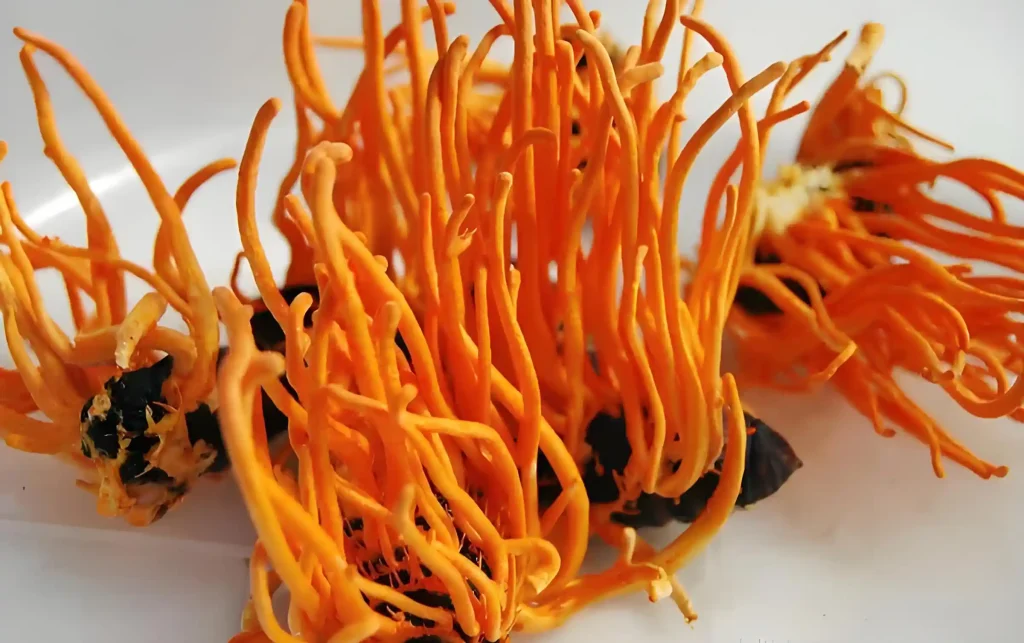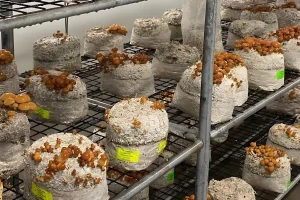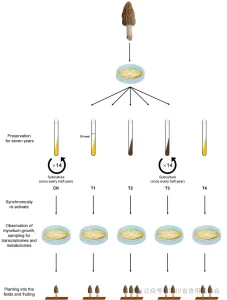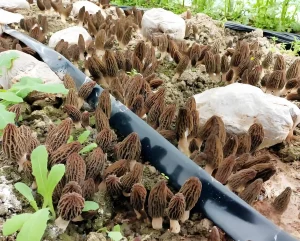When it comes to Cordyceps sinensis, most people may be familiar with it and think of it as a precious Chinese medicinal herb originating from Tibet. However, did you know that Liaoning, located in the golden agricultural latitude zone from 38° to 43° north latitude, also produces a type of cordyceps with extremely high nutritional and health – care value? This is Cordyceps militaris.

Cordyceps militaris is a unique edible (medicinal) fungus in Liaoning, also known as Northern Cordyceps sinensis or Cordyceps flower. Its edible and medicinal value can be comparable to that of traditional Cordyceps sinensis. Currently, the Cordyceps militaris industry has become a characteristic modern agricultural project in Liaoning. Large – scale production has made Cordyceps militaris accessible to ordinary people, benefiting human health and also helping farmers to get rich.
Cordyceps militaris: An Ideal Substitute for Wild Cordyceps sinensis
Cordyceps militaris is an edible and medicinal fungus. It not only contains rich nutrients such as proteins and amino acids but also essential trace elements for the human body, including phosphorus, zinc, copper, and iron. In addition, it has a variety of active ingredients with medicinal value, such as cordycepin, pentostatin, cordycepic acid, and cordyceps polysaccharide. These ingredients endow Cordyceps militaris with functions such as anti – cancer, liver – tonifying and kidney – strengthening, sedation and tranquility, antibacterial and anti – inflammatory effects, immune – enhancing, and anti – aging. Many experiments have shown that in terms of health – care functions, Cordyceps militaris is no less effective than Cordyceps sinensis. Recent studies have further indicated that the main active ingredients in Cordyceps militaris, cordycepin and pentostatin, cannot be synthesized in Cordyceps sinensis.
Since Cordyceps militaris can be artificially cultivated, its price is very affordable. The “Compendium of Chinese Herbal Medicines” records that “the fruiting bodies and insect bodies of Northern Cordyceps sinensis can be used as Cordyceps sinensis for medicine.” Therefore, Cordyceps militaris is an ideal substitute for wild Cordyceps sinensis.
Liaoning: The Birthplace of Cordyceps militaris
Why do I call Cordyceps militaris “Liaoning Cordyceps”? Because Liaoning has made indelible contributions to the Cordyceps militaris industry across the country. Liaoning is the earliest discovery place of wild Cordyceps militaris in China, the original place of artificial cultivation technology, and the place of technology dissemination. Currently, it is also the world’s largest production and distribution center of raw materials for artificially cultivated Cordyceps militaris.
In August 1986, scientific researchers in Liaoning discovered 9 wild Cordyceps militaris in the forest on the north bank of Qipanshan Reservoir in Shenyang. They separated and domesticated the collected fruiting bodies, thus kicking off the research on artificial cultivation of Cordyceps militaris in China.
In order to make better use of the wild Cordyceps resources in Qipanshan, the Shenyang Qipanshan Bio – engineering Research Institute was established in 1994, mainly engaged in the breeding of Cordyceps militaris strains and the research on cultivation techniques. In 1996, the China Edible Fungi Association and the Liaoning Edible Fungi Professional Association held the “China Mushroom and Northern Cordyceps sinensis Seminar” in Shenyang. The artificial cultivation of Northern Cordyceps sinensis gradually spread in some provinces and cities in China, starting from Liaoning.
After generations of continuous research by Cordyceps workers on the breeding of excellent strains and cultivation techniques, the regional and seasonal limitations of cultivating Cordyceps militaris have been completely overcome. Liaoning has successfully achieved large – scale production, making Cordyceps militaris accessible to ordinary people, benefiting human health and helping farmers to get rich.
Golden Grass: Bringing Considerable Economic Benefits to Growers
Currently, the cultivation scale of Cordyceps militaris in Liaoning ranks first in the country. The annual output of fresh Cordyceps militaris is about 80,000 tons (about 12,000 tons of dried products), accounting for about 70% of the national output. The direct output value of cultivation is 700 million yuan, bringing considerable economic benefits to Cordyceps militaris growers. Therefore, it is also called “Golden Grass”.
The cultivation area of Cordyceps militaris in Liaoning consists of a cultivation industry circle around Shenyang and a linear industrial belt along the highway from Shenyang to Dengta, Liaoyang. Hongqitai Village in Yuhong District, Shenyang is the largest production base for artificial cultivation of Cordyceps militaris in Liaoning Province and the first village for large – scale cultivation of Cordyceps militaris in the country. It is the birthplace and dissemination center of large – scale cultivation. There is a saying in the industry that “Cordyceps in Liaoning depends on Shenyang, and Cordyceps in Shenyang depends on Hongqitai.”
In the Cordyceps militaris cultivation room in Heilintai Village, Sujiatun District, Shenyang, the golden Cordyceps militaris are neatly arranged and growing well. In 2016, Wang Yinhong, the secretary of Heilintai Village, led the villagers to start growing Cordyceps militaris. Currently, 36 facilities greenhouses have been built, with an annual output value of nearly 40 million yuan, an annual net profit of more than 12 million yuan, providing employment for 500 people in the village, and the average monthly income per person is more than 6,000 yuan.
Liutiao Village in Dengta, Liaoyang is a rising star in the Cordyceps production in Liaoning. It now has the reputation of “the first town of Cordyceps in Liaoning”. Although it started late, it has late – mover advantages, with good facilities, concentrated industries, and large scale. There are 335 Cordyceps sheds in four villages in Liutiao Village, namely Nanlidadaren Village, Beilidadaren Village, Haozitun Village, and Liutiao Village. The entire process from planting, inoculation, turning the stack and piercing holes to harvesting and drying is carried out by professional teams organized by local farmers. Each person can earn at least two or three hundred yuan and at most seven or eight hundred yuan per day, driving the employment of more than 2,000 people locally.
The Cordyceps is delicate and slender, and the industry benefits the people’s livelihood.
More:
- 2025: The Year Agriculture Enters the AI Era – A New Wave of Transformation on the Horizon IAgricultural AI Revolution
- Algarikon Zero Project: How a Spanish Firm Transforms Invasive Algae for Edible Mushroom Cultivation
- 🔍 Research Uncovers Key Mechanisms of Morel Strain Degradation
- Spain: Edible Mushrooms Found to Alleviate the “Salty” Dilemma of the Meat Industry
- Yunnan’s Morel Mushroom Industry: Current Status and Prospects


